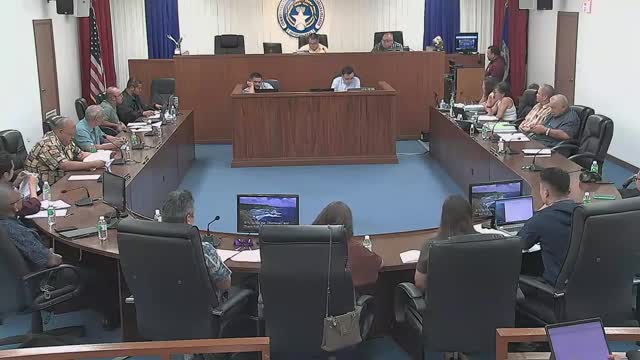Korean Air merger sparks hopes for new charter flights
June 21, 2024 | Ways & Means, House, Northern Mariana Legislative Sessions, Northern Mariana Islands

This article was created by AI summarizing key points discussed. AI makes mistakes, so for full details and context, please refer to the video of the full meeting. Please report any errors so we can fix them. Report an error »

In a recent government meeting, discussions centered around the potential merger between Korean Air and Asiana Airlines, with a focus on increasing air travel to Guam. Officials expressed optimism about the merger's approval, which could pave the way for Korean Air to expand its services to the region. The administration is considering incentives to attract Korean Air, which has shown interest in charter flights as a preliminary step before establishing regular routes.
The meeting highlighted previous efforts to engage Korean Air, including a letter from the governor last year urging the airline to consider flights to Saipan. Despite initial hesitations due to Asiana's operations, recent discussions indicate that Korean Air is now more open to exploring charter options. However, the cost of charter flights poses a challenge, as they are significantly higher than regular fares, which could deter tour operators from committing to purchasing seats.
Officials noted that while there is demand for flights, the current market is perceived as saturated, particularly with Jeju Air adding additional flights. This saturation has made other low-cost carriers hesitant to enter the market, as they fear that new flights would not be financially viable.
In addition to the Korean market, the meeting touched on the Japan market, where officials acknowledged the challenges posed by a lack of low-cost carriers and unfavorable exchange rates. The only U.S. carrier currently serving the region is limited, and while there is interest in attracting other airlines, regulatory hurdles remain.
Looking ahead, the administration plans to allocate marketing funds to support both Korean Air and existing tour operators, aiming to stimulate demand organically rather than through direct subsidies. The expectation is that by the end of the year, announcements regarding new flights from Korean Air could be made, contingent on the final approval of the merger.
The meeting highlighted previous efforts to engage Korean Air, including a letter from the governor last year urging the airline to consider flights to Saipan. Despite initial hesitations due to Asiana's operations, recent discussions indicate that Korean Air is now more open to exploring charter options. However, the cost of charter flights poses a challenge, as they are significantly higher than regular fares, which could deter tour operators from committing to purchasing seats.
Officials noted that while there is demand for flights, the current market is perceived as saturated, particularly with Jeju Air adding additional flights. This saturation has made other low-cost carriers hesitant to enter the market, as they fear that new flights would not be financially viable.
In addition to the Korean market, the meeting touched on the Japan market, where officials acknowledged the challenges posed by a lack of low-cost carriers and unfavorable exchange rates. The only U.S. carrier currently serving the region is limited, and while there is interest in attracting other airlines, regulatory hurdles remain.
Looking ahead, the administration plans to allocate marketing funds to support both Korean Air and existing tour operators, aiming to stimulate demand organically rather than through direct subsidies. The expectation is that by the end of the year, announcements regarding new flights from Korean Air could be made, contingent on the final approval of the merger.
View full meeting
This article is based on a recent meeting—watch the full video and explore the complete transcript for deeper insights into the discussion.
View full meeting